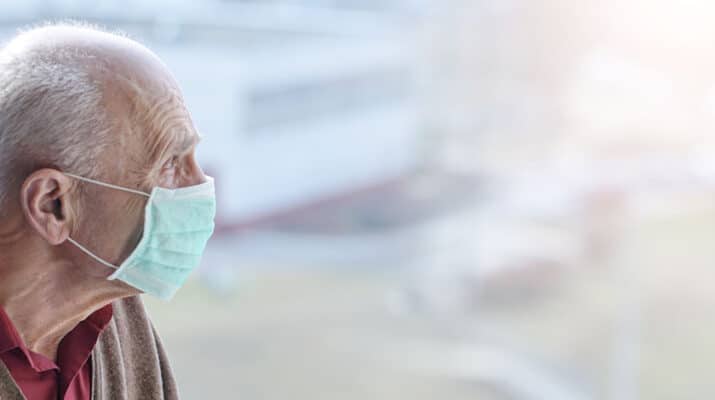By Deborah Jeanne Sergeant
Are nursing homes and other senior living facilities really a safe place for seniors to live?
According to a Sept. 18 article by Judith Graham published by Kaiser Health, a lot of older adults are rethinking their final planning and considering other options than going to a nursing home or assisted living facility should they need help with activities of daily living.
The article cited a survey in August by the National Investment Center for Seniors Housing & Care that 74% of senior housing executives said families have expressed concern about safety amid rising COVID-19 cases.
To assuage these concerns and to keep residents safe, the industry in general is responding, according to Jennine Sauriol, WNY regional director for admissions and marketing for Centers Health Care, parent company for Ellicott Center and Buffalo Center for Rehabilitation and Nursing.
“As for the cleaning part of it, I know they’ve had some changes and they’re doing more vigorous, deep cleaning,” she said. “We are following all the state guidelines.”
Ramping up measures to quarantine ill residents, limit the contact of all residents with potential sources of infection, using personal protection equipment more, and testing staff for COVID-19 weekly have helped curtail the virus’ spread. Anyone coming in the door must be screened and no visitors are permitted.
Sauriol said that one positive aspect of the pandemic is that facilities will have improved their protocols for the outbreak of any illness regarding preventive measures, acquiring and using PPE, and stocking necessities.
Group activities among residents are still not happening.
“If they’re doing things, it’s on each specific unit,” Sauriol said. “But not taking a patient from Unit A to Unit B for activities.”
The Centers Health Care also try to keep staff members working on the same floors. About 40 to 89 residents live in each unit.
“If there is an outbreak, the gym would shut down and they’d be confined to their rooms,” Sauriol said. “COVID-19 is a scary thing. People can get it and lose their life. It’s a very serious thing and we’re doing everything we can to stay in between the residents and COVID-19 as much as possible. We don’t want anyone to get ill. We’re doing everything we can to help them.
Right now, nursing homes are probably the safest place for people because so much has been done.”
For those with the means to do so, choosing home health may help reduce the population of people living in nursing homes to a safer capacity. Some estimate that a rate of 80% capacity helps prevent the spread of COVID-19 . But it is difficult to tell what level of care one will need in 10 or 20 years.
“As much as people try to predict whether or not they will need nursing home care, a lot of people will,” said Nate Sweeney vice president skilled services at St. John’s Home in Rochester.
According to AARP, 52% of people turning 65 years old will need long-term care at some point in their lifetime. AARP further states that more than half will need care for more than two years.
“For the folks who do need it, we went to create the safest environment possible with their choices and preference in consideration,” Sweeney said. “We have added more private rooms than we had before.”
In addition to increasing cleaning protocols, technology like ultraviolet radiation machines can help the dedicated cleaning staff disinfect surfaces that are more difficult to disinfect, like upholstery.
Sweeney said that the rules about visitation continue to evolve, but the amount of space at St. John’s helps with social distancing.
All the changes taking place have cause caregivers to reevaluate how they operate.
“All of our protocols are constantly being looked at and updated,” Sweeney said. “We have a great interdisciplinary team that comes together from different perspectives to look at anything COVID-related. That process has been very beneficial for us. You make the best decisions when it’s a variety of diverse perspectives.”
He believes that the pandemic has encouraged cross-discipline collaboration among long-term care providers and greater agility to adapt when unexpected emergencies occur.
Park Creek Senior Living Community, which offers assisted living and memory care in Williamsville, has not experienced any cases of residents with COVID-19 ; however, that doesn’t mean it is business as usual.
“We have seen some changes in residents due to the isolation since they cannot go out with their families and loved ones,” said Geri Robinson, administrator. “Because of that, we’ve changed our activities programs to incorporate different activities we’ve done before and tried to bring more programs.”
This includes streaming entertainment through Netflix and church services and bringing in live performers to the backyard with social distancing. It’s a big change for a center that’s typically “very hands on,” Robinson said. “We’re very afraid for our residents. The average age is 88 and we have some into their late 90s. They’re not used to seeing us in masks. This is a social model. It’s hard to just express with our eyes.
“Many have hearing difficulties. Things can get lost in translation.”
Visiting with family has been on the patio with the resident on one side and their family members on the other. The situation has been especially difficult for residents in memory care.
“I can’t tell you how hard it is for them to not get hugs,” Robinson said.
Park Creek staff have noticed a decrease in colds and Robinson anticipates that perhaps flu season will be minimized with the limited outside contact and the constant hygiene and sanitizing. But she also thinks that “the seniors have paid the price” since staying inside and away from others can be so isolating.

